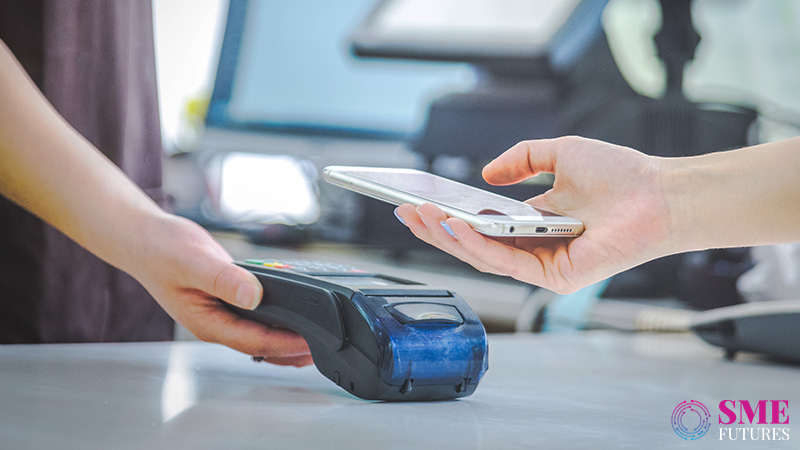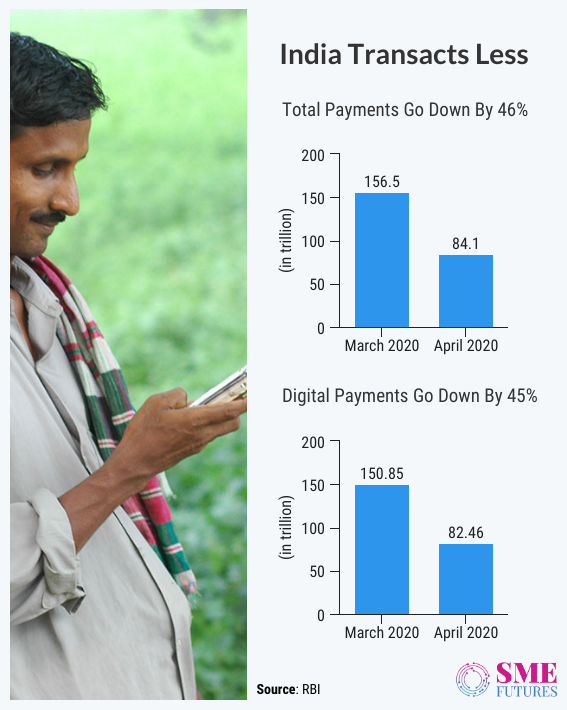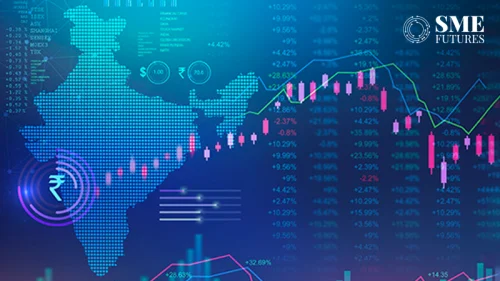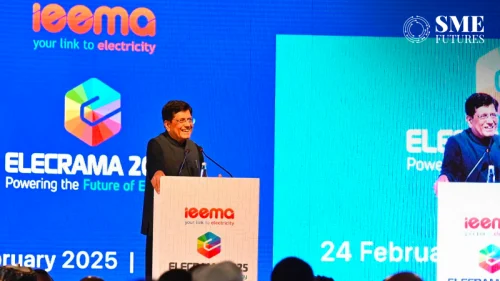The COVID-19 pandemic has given a body blow to the Indian economy. Its effect was worse in sectors such as travel, hospitality, retail, and entertainment. Hence, it is no surprise that digital payments methods for goods and services such as cards, wallets, UPI etc have witnessed a steep fall since the lockdown started.
It is predicted that many commercial establishments (pertaining to retail and entertainment etc) will probably not survive after the end of pandemic. According to the monthly bulletins by RBI, the digital payments in April and paper based payments dropped to 46 per cent which is worth Rs 84.1 trillion, from Rs 156.5 trillion in March.
The total payment transactions in volume, slumped 22 per cent to 2.38 billion, from 3.07 billion in March. Needless to say digital payment transactions both in volume and value contracted in April. In value, payments dropped 45 per cent to Rs 82.46 trillion from Rs 150.85 trillion. In terms of volume, the drop was 21 per cent to 2.36 billion from 3 billion.
Another research forum, Worldline India states that overall the volume and value of digital transactions in Q1 2020 dipped by 10 per cent and 12 per cent respectively as compared to Q1 2019. In addition to this, transactions with merchants nosedived in Q2 as a result of extended lockdown periods.
State of Card Payments and ATM Transactions in Retail
Retail sector saw a massive dip in operations during lockdown which lead to a significant decrease in shopping. Thus, retail payments sunk to a low of 45 per cent which is worth Rs 19.66 trillion from Rs 36.03 trillion.
In terms of volume, retail payments dropped to 2.37 billion from 3.06 billion. Similarly, being an indispensable part of retail economy, card transactions through debit and credit cards also witnessed a dip. It registered a decrease of 57 per cent to Rs 49,807 crore in April, from Rs 1.15 trillion in March in volume.
Similarly, cash withdrawals also halved in April because of deserted ATMs. In comparison to March (that accounted for almost Rs 2.51 trillion), cash withdrawals accounted for Rs 1.27 trillion in April. In volume terms, the cash withdrawal from ATMs was 286.6 million in April as compared to a hefty 547.1 million in the previous month.
The number of transactions through ATMs using debit cards also fell nearly to half with a withdrawal of 285.2 million in April, as compared to 544.1 million in the preceding month. According to RBI data, there was a slight increase in number of cards which includes both debit and credit cards.
There were more than 886.8 million cards in April, including 57.3 million credit cards and 829.4 million debit cards. The total number of cards in March was about 886.3 million. In addition to this, there were 234,000 ATMs and 5.08 million point-of-sale (PoS) terminals.
Online Payment Becoming a Popular Mode of Payment
Despite the decline in transactions that RBI has recorded after the outbreak of coronavirus, the online payment transactions have become popular in the economic ecosystem. Hence, the digital payments space will also get a boost once the recovery starts.
A report ‘101 Days of COVID-19 Era: Impact on Digital Payments’ released by Razorpay in first week of July, confirms the trend. It states that digital payment transactions have rebounded by 23 per cent in June 2020. The report states, “The overall digital transactions declined by 12 per cent in the last 101 days, compared to a 30 per cent drop in the first 30 days of lockdown.”
Commenting on rebounding of digital payment transactions Harshil Mathur, CEO and co-founder of Razorpay asserts, “The digital payments industry couldn’t escape the pandemic crisis; we witnessed a dip of 30 per cent in online payments since the lockdown began. Now seeing a rebound of 23 per cent over the last 30 days is a sign of gradual revival of the digital economy.”
Mathur believes that there is an increased demand for digital payments in tier 2 and 3 cities. Covid-19 has definitely propelled the trend to overthrow cash to the extent which even demonetization could not impact. Surprisingly, Indians have now become more comfortable paying for services without cash.
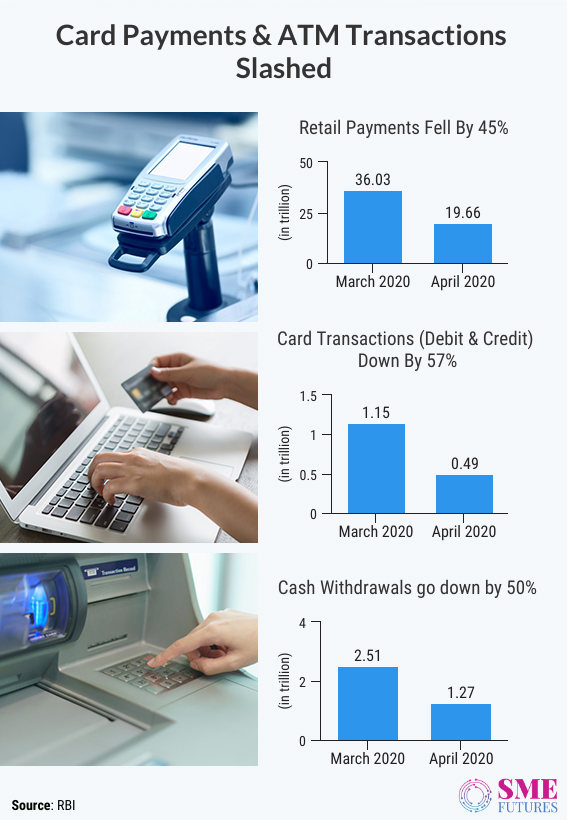
Rise of Digital Payment Industry
Clearly, COVID-19 has set up a right trajectory for digital payment industry. According to a KPMG last year’s report on digital payment, the online payment industry is growing at the CAGR of 12.7 per cent. A report by Statista tells that India was flushed with around 375 digital payment fintech startups in 2019.
RBI recorded a surge in cash withdrawal volumes at PoS machines. It increased in April to 4.08 million, from 3.36 million in March. This increase in terms of value, stood at Rs 111 crore, compared with Rs 110 crore in March. Similarly, the number of transactions at micro ATMs using Aadhaar-enabled payment system doubled to 87.55 million in April, from 34.49 million.
Meanwhile RBI is also urging people to adopt online payment modes as a measure to contain the virus. This has pushed firms, MSMEs, gig workers, and unbanked to jump into the bandwagon of becoming equipped with digital platforms just to transact cashless anywhere and anytime.
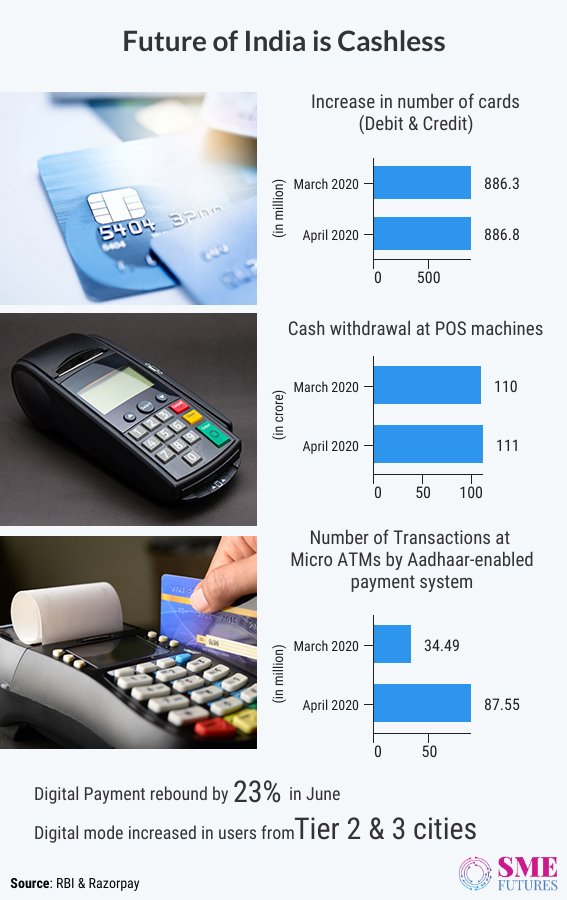
Sectors that Added value
The wrath of COVID-19 forced various sectors to shut down their operations for meanwhile. Thus, businesses adopted for digital solutions for an overall growth of their operations while others opted for this paradigm shift to stay ahead of others.
According to the Razorpay report, the online education sector grew by 23 per cent during the 101 days of lockdown (March 24-July 2), as extended lockdown led to a rise in demand for online courses.
Medical services accelerated as online consultations and purchases increased by 20 per cent. To ensure health and safety from COVID-19, Indians opted to stay indoors and paid bills online. This contributed to the growth of utilities sector by 163 per cent.
Other finding reveals that due to stress in income across households, consumer payment behaviour has changed. Paylater, Cardless-EMI, and EMI have become preferred payment modes with a growth of 290 per cent, 178 per cent and 125 per cent respectively. Further, when it came to payment methods UPI continued to be the preferred mode.
It grew by 43 per cent, cards by 40 per cent and net banking by 10 per cent. Mobile wallet transactions grew in first 30 days of lockdown, particularly in tier-2 cities. This was due to spike in the popularity of AmazonPay, JioMoney and Paytm. It was also due to increased contribution towards PM Cares fund and cash back offers.

Rise of Digital Payment Startups
Small and medium businesses and consumers have realised the frustration involved in handling cash after experiencing seamlessness of digital payments. This has provided a much need push to fintech firms.
Sensing the opportunity, digital payment startups have been proactively working to create a landmark on their own. One such fintech startup is Zaggle which offers pre-paid cards, products, and solutions for their enterprise customers.
The firm has lately seen a remarkable jump of 600 per cent with more than 7,00,000 users of their virtual cards. Raj N Phani, Founder and Chairman, Zaggle tells SMEFutures.com, “The crisis has forced people and businesses to adopt digital platforms, discover new effective fintech products, and adapt to a new normal of digital life in compulsion.”
He further adds, “This shift in digital demand is one of the major opportunities for all fintech start-ups. They will now play an important role as a mediator and as a technology facilitator to all those who have been trying to shift their traditional operations to a technological platform.”
Sensing the sustainability of the virtual cards, Phani speaks to SME Futures on the big plans of his firm. He says, “Zaggle is witnessing good growth in virtual cards business. We will soon be launching an open banking platform and free API along with the banking system. This Open Banking Platform will help corporates in all transactions and bid in the real-time for loans.”
Zaggle, recently has commenced its overseas operation in Canada in the month of May and is looking for expansion in London. Another digital payment player SpiderG, views this situation as a catalyst for the growth of digital payment start-ups. Both CEO Ashwani Rathore and Co-founder Harshal Ingle feel that current scenario supports the growth of digital payment platforms in every way.
Presenting his views about this, Rathore says, ”Digital payment platforms are witnessing a sharp jump in the number of users as cash transactions across the country see a steep decline. Fintechs will innovate more now to bring a revolution of contactless transactions. With consumers shifting to digital channels, every business will try to embrace digital practices into their processes including micro-entrepreneurs such as newspaper vendors, milk vendors etc.”
SpiderG is an on-time payment collection and one-click payment disbursement app for paying salaries, utility bills, and expenses for micro-businesses. Consumers can send reminders, perform follow-up, and automate recurring e-bills to their customers for payment through this app.
On the crisis led performance, Rathore adds, ”We have been faring well with about 15,000 micro-merchants so far and a presence in more than 50 cities. With an existence in more than 17 states, we produce nearly 7,00,000 recurring invoices monthly and cater to more than 15 micro-business segments that use our services.”
The firm has recently launched a micro-payment portal, a shopping website, and an appointment website for micro-businesses to give a boost to their digital presence according to their needs.
They are integrating with various banks to provide innovative payment features and building their own technology stack for digital lending to meet the short-term capital needs of customers. Talking about immediate goals, SpiderG aims to have 100,000 micro businesses on board and 10 million recurring invoices by March 2021.
In the similar vein, XPay.Life, a NPCI-approved multi-utility bill payment platform has clocked revenue of Rs. 3 crore in May with more than 60,000 transactions. The firm noted that most of these transactions were made towards the payment of electricity bills. Among other categories, transactions worth Rs 23 lakhs were generated from mobile vans which were deployed in remote areas of Jharkhand to dispense cash.
Commenting on the surge in digital payment transactions Rohit Kumar, Founder and CEO, XPay.Life opines, “We have partnered with NPCI to bring the benefits of digital payments to the unbanked pockets of our country and thereby work towards our mission of financial inclusion. As lockdown restrictions for essential services were lifted in non-infected zones, 73,000 users were registered with transactions clocking up to Rs 5.4 million.”
Cash Versus Cashless Economy
Cash economy is deeply embedded into the payment systems of our country. Therefore, even merchants are reluctant to choose cashless payment options. Despite this, efforts to encourage digital methods after demonetisation have worked wonders.
According to a recent study of RBI, the demand for high value denominated currency over past five years has outpaced low value denominated currency. This again indicates that ‘cash is increasingly used as a store of value and less for making payments.’
However, the rate of increased cash-in-circulation (CIC) clearly indicates a perceptible shift from cash. The study further tells that the value of cash withdrawals at ATMs to GDP is constant at around 17 per cent.
This rate was 15 per cent during the demonetisation period. The value of digital payments to GDP increased from 660 per cent in 2014-15 to 862 per cent in 2018-19. It clearly elaborates the shift of consumers from traditional to digital payments in India. However, India still needs to create an ecosystem to bring unbanked population under digital India.
According to Mathur of Razorpay, revolutionary innovations in payment systems can only pave the pathway for a new digital India. He concludes, “Digitisation needs to be clubbed with intelligent innovations in financial transactions focussed on improving customer experience. If fintech firms and banks re-examine their business models and choose to work together, I believe, we are likely to come out stronger after this crisis.”

